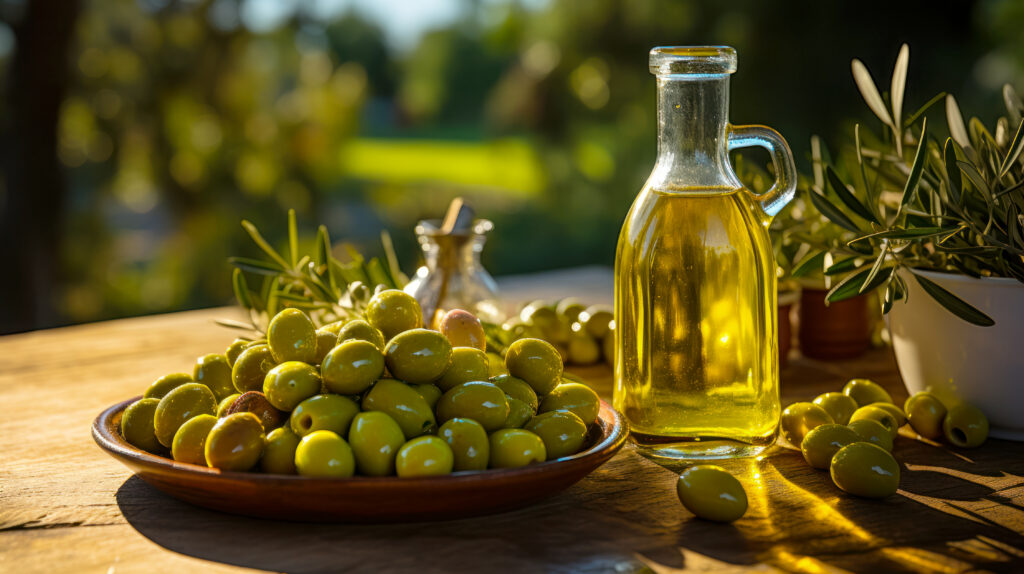
If you’ve ever explored the world of cooking oils, you’ve likely heard of extra virgin olive oil, coconut oil, or avocado oil. But have you stumbled across olive pomace oil? This underrated oil is a staple in many kitchens and industries, yet it’s often misunderstood. Let’s break down what olive pomace oil really is, how it’s made, and why it deserves a spot in your pantry.
What Exactly is Olive Pomace Oil?
Olive pomace oil is a type of oil extracted from the leftovers of olive oil production. When olives are pressed to make extra virgin or virgin olive oil, the process leaves behind a paste-like residue called “pomace.” This pomace consists of olive skins, pulp, pits, and a small amount of residual oil. Instead of discarding this byproduct, producers use advanced methods to extract every last drop of oil from it. The result? Olive pomace oil—a versatile, affordable, and heat-stable cooking oil.
Think of it as the “second life” of olives. While it’s not as premium as extra virgin olive oil, it’s far from wasteful. This oil bridges the gap between quality and practicality, making it a favorite for high-heat cooking and everyday use.
How is Olive Pomace Oil Made?
The journey of olive pomace oil starts after the first press of olives. Here’s a simplified breakdown of the process:
- Olive Pressing: Fresh olives are crushed to extract extra virgin or virgin olive oil. What’s left is a dry, fibrous pomace.
- Drying the Pomace: The pomace is dried to remove moisture, making it easier to extract the remaining oil.
- Solvent Extraction: Food-grade solvents (like hexane) are used to dissolve and separate the last traces of oil from the pomace.
- Refining: The crude oil undergoes refining to remove impurities, resulting in a neutral-tasting, light-colored oil.
- Blending: Sometimes, a small percentage of virgin olive oil is mixed back into the refined oil to enhance flavor and color.
This process ensures minimal waste and maximizes the use of olives. However, because solvents are involved, olive pomace oil is not considered “virgin” or “cold-pressed.”
Olive Pomace Oil vs. Other Olive Oils: What’s the Difference?
Confused about how olive pomace oil stacks up against other olive oils? Let’s compare:
- Extra Virgin Olive Oil: Made from the first cold pressing of olives. It’s unrefined, retains strong flavor and aroma, and is best for dressings or low-heat cooking.
- Virgin Olive Oil: Slightly lower quality than extra virgin, with a milder taste. Also unrefined.
- Refined Olive Oil: Processed to remove flaws, resulting in a neutral taste and higher smoke point.
- Olive Pomace Oil: Extracted from leftovers, refined, and blended. It has a high smoke point, mild flavor, and budget-friendly price.
The key takeaway? Olive pomace oil is ideal for frying, sautéing, or baking, while extra virgin olive oil shines in raw applications.
Why Should You Use Olive Pomace Oil?
Here’s why this oil deserves your attention:
- High Smoke Point: With a smoke point of around 460°F (238°C), olive pomace oil won’t burn easily, making it perfect for deep-frying or stir-frying.
- Light Flavor: Its neutral taste won’t overpower dishes, unlike stronger oils like coconut or sesame.
- Cost-Effective: It’s significantly cheaper than extra virgin olive oil, saving you money for bulk cooking.
- Versatile: Use it for roasting veggies, greasing pans, or even making homemade soaps and skincare products!
- Eco-Friendly: By using olive byproducts, it reduces waste in the olive oil industry.
Common Uses of Olive Pomace Oil
Olive pomace oil isn’t just for frying! Here are some creative ways to use it:
- Cooking: Fry chicken, roast potatoes, or bake bread without worrying about burnt oil.
- Marinades: Its mild flavor lets herbs and spices shine.
- Skincare: Rich in antioxidants, it’s used in soaps, lotions, and hair masks.
- Preserving Foods: Use it to store cheeses or sun-dried tomatoes in jars.
Pro tip: While it’s great for heat, avoid using it for delicate dishes like salads—opt for extra virgin olive oil instead.
:- its very good for heart health .
Busting Myths
Let’s clear up some misconceptions:
- Myth 1: “It’s low quality.”
Truth: While it’s not virgin-grade, olive pomace oil undergoes strict safety checks and is approved for consumption. - Myth 2: “It’s unhealthy.”
Truth: It contains heart-healthy monounsaturated fats, just like other olive oils. - Myth 3: “It tastes bland.”
Truth: Its subtle flavor is a benefit for recipes where you don’t want an olive-heavy taste.
How to Choose a Good Olive Pomace Oil
Not all olive pomace oils are created equal. Follow these tips:
- Check labels for terms like “refined” or “blended with virgin olive oil.”
- Opt for brands that use chemical-free extraction methods if possible.
- Store it in a cool, dark place to prevent rancidity.
Also, read our blog on pre-wedding glow blog .
Final Thoughts: Give Olive Pomace Oil a Try!
Olive pomace oil might not have the glamour of extra virgin olive oil, but it’s a workhorse in the kitchen. Whether you’re frying, baking, or experimenting with DIY beauty products, this oil offers practicality without breaking the bank. Next time you’re browsing the oil aisle, grab a bottle and discover its underrated magic!
Got questions about olive pomace oil? Drop them in the comments below! 👇
